Flight season: early June to late August.
Population: abundant, probably the most commonly encountered Bluet in this part of the county
and apt to be found at any local marsh, pond or lakeshore with aquatic and emergent vegetation.
Length: about 30 mm. Familiar, Hagen's and sometimes Tule Bluets are very similar in appearance and cannot be reliably separated by sight.
The only way to be certain as to species is by study of the male's cerci and female's mesostigmal plates.
|
|
Tweed, Ontario, the Moira River, near the walking bridge and dam:
rock-bottomed river with fast flowing water, rapids and emergent rocks, but also quiet pools and backwaters.
The shoreline vegetation is mostly trees with a few small clearings supporting tall grasses and wildflowers.
|
Male Marsh Bluet (Enallagma ebrium) and its claspers
June 11, 2010
|
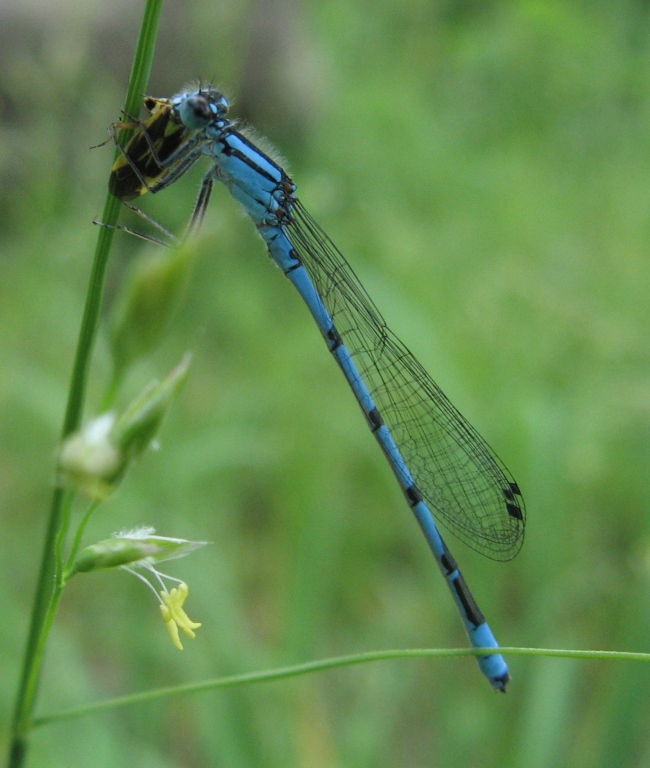
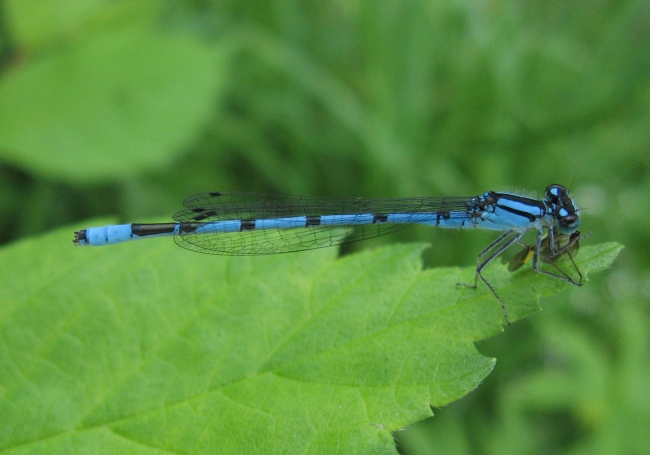
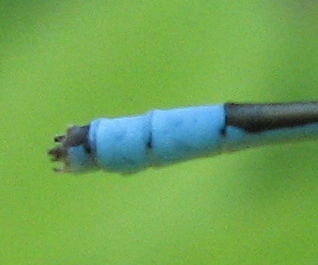
|
Tweed, Ontario, the north shore Stoco Lake, east of the boat pier:
marshy shoreline, relatively shallow water with mud bottom supporting sedges and rushes, pondweeds, Fragrant Water Lily, Blue Flag, Sagittaria spp and Pickerelweed.
|
|
Male Marsh Bluet (Enallagma ebrium) – when viewed from the right angle the forked cerci are discernible in the field without a magnifying glass
(August 03, 2009).
|
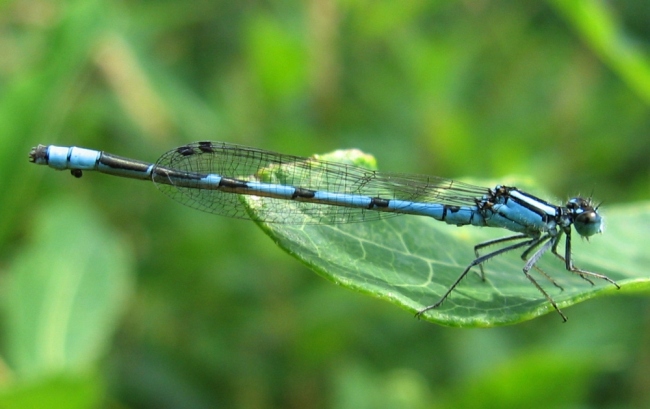
......................................................................
Male Marsh Bluet (Enallagma ebrium) and its claspers
June 18, 2010
|
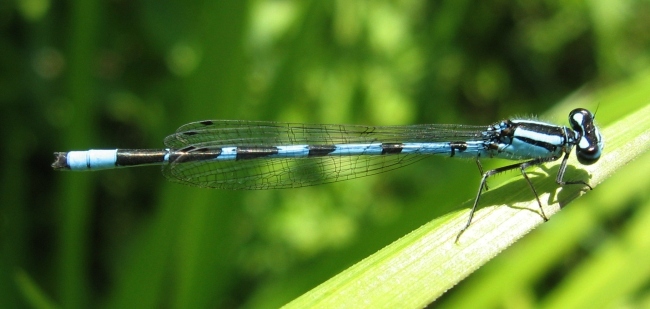
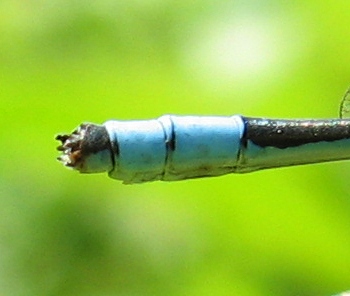
|
Tweed, Ontario, an unused lot near the Louisa St. bridge over the Moira River:
rock-bottomed river with fast flowing water, rapids and emergent rocks. An untended lot along the shoreline supports tall grasses, wildflowers and some trees.
|
|
This immature male Marsh Bluet (Enallagma ebrium) is
a pale lilac color rather than the powder blue of older males (June 14, 2014).
|
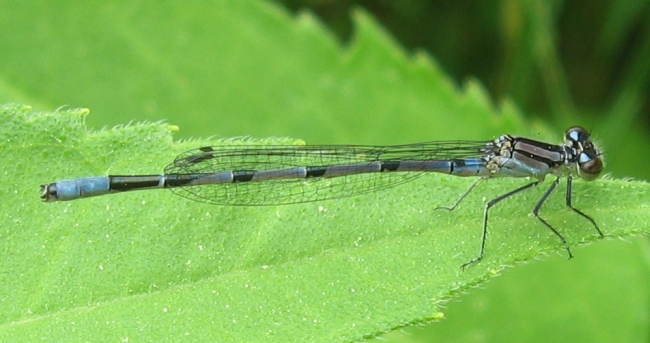
|
Tweed, Ontario, about ½ km west of town, a marsh bordering the trans-Canada Trail:
typical local marsh with Cattails, sedges and other emergent vegetation, various small willows, alders, dogwoods and some Tamarack.
|
|
Marsh Bluet (Enallagma ebrium), tandem – the females are usually green but some individuals may show blue or tan.
Since it was established that the male was a Marsh Bluet there was no need to examine the female's mesostigmal plates.
The instinct to mate is so overpowering that even if the female were being held it's unlikely the male would release his grip and take flight
(July 10, 2014).
|
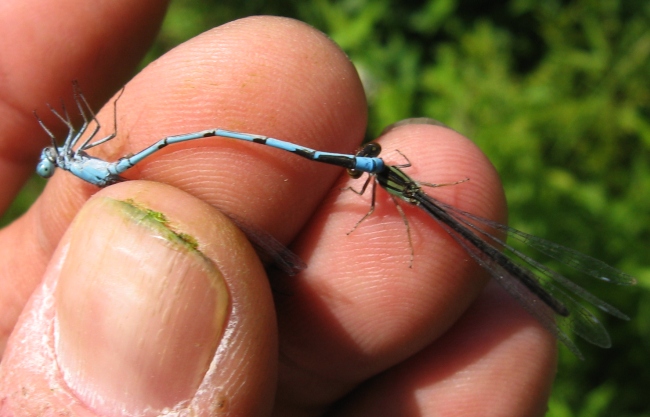
|















